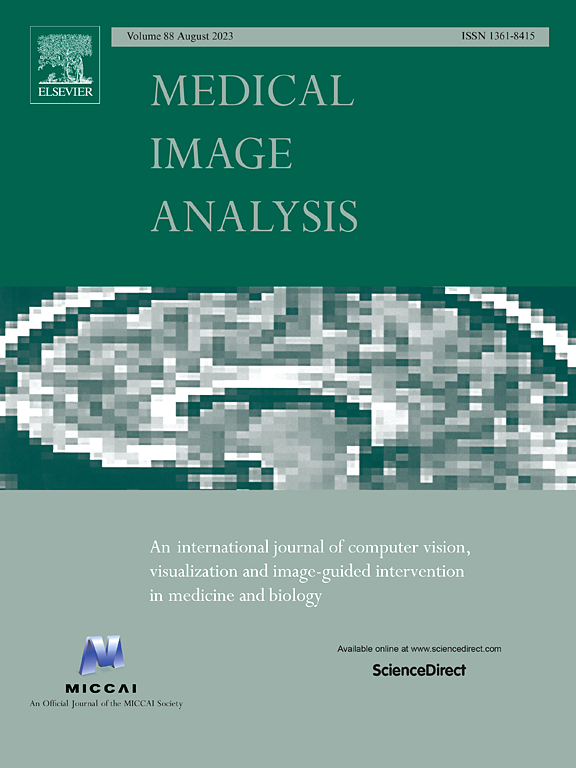Harmonizing flows: Leveraging normalizing flows for unsupervised and source-free MRI harmonization
IF 10.7
1区 医学
Q1 COMPUTER SCIENCE, ARTIFICIAL INTELLIGENCE
引用次数: 0
Abstract
Lack of standardization and various intrinsic parameters for magnetic resonance (MR) image acquisition results in heterogeneous images across different sites and devices, which adversely affects the generalization of deep neural networks. To alleviate this issue, this work proposes a novel unsupervised harmonization framework that leverages normalizing flows to align MR images, thereby emulating the distribution of a source domain. The proposed strategy comprises three key steps. Initially, a normalizing flow network is trained to capture the distribution characteristics of the source domain. Then, we train a shallow harmonizer network to reconstruct images from the source domain via their augmented counterparts. Finally, during inference, the harmonizer network is updated to ensure that the output images conform to the learned source domain distribution, as modeled by the normalizing flow network. Our approach, which is unsupervised, source-free, and task-agnostic is assessed in the context of both adults and neonatal cross-domain brain MRI segmentation, as well as neonatal brain age estimation, demonstrating its generalizability across tasks and population demographics. The results underscore its superior performance compared to existing methodologies. The code is available at https://github.com/farzad-bz/Harmonizing-Flows.

求助全文
约1分钟内获得全文
求助全文
来源期刊

Medical image analysis
工程技术-工程:生物医学
CiteScore
22.10
自引率
6.40%
发文量
309
审稿时长
6.6 months
期刊介绍:
Medical Image Analysis serves as a platform for sharing new research findings in the realm of medical and biological image analysis, with a focus on applications of computer vision, virtual reality, and robotics to biomedical imaging challenges. The journal prioritizes the publication of high-quality, original papers contributing to the fundamental science of processing, analyzing, and utilizing medical and biological images. It welcomes approaches utilizing biomedical image datasets across all spatial scales, from molecular/cellular imaging to tissue/organ imaging.
 求助内容:
求助内容: 应助结果提醒方式:
应助结果提醒方式:


